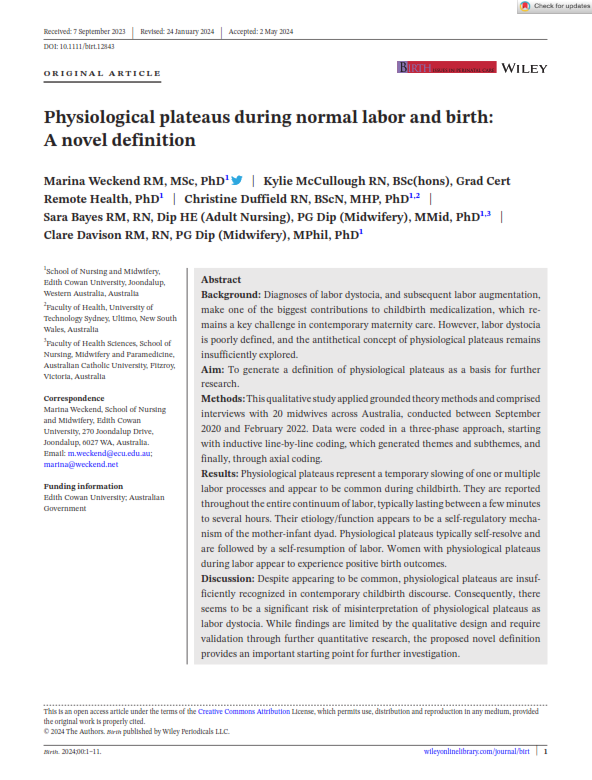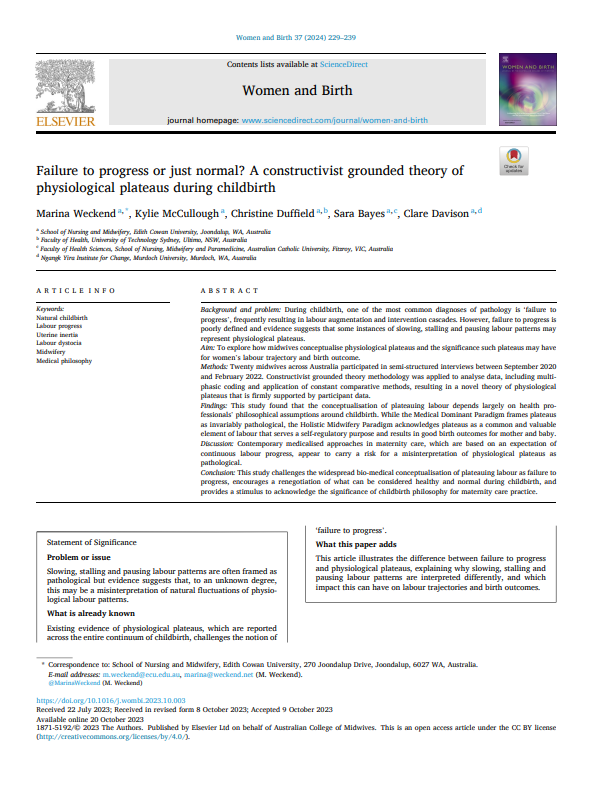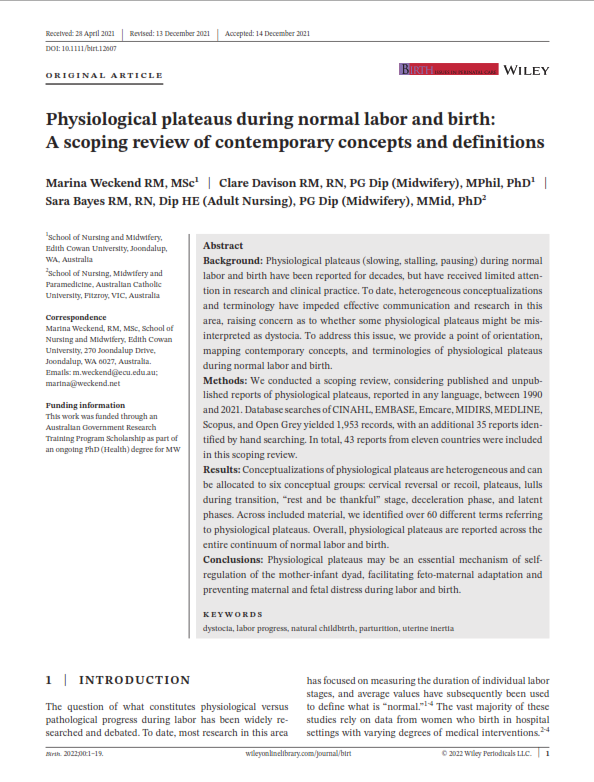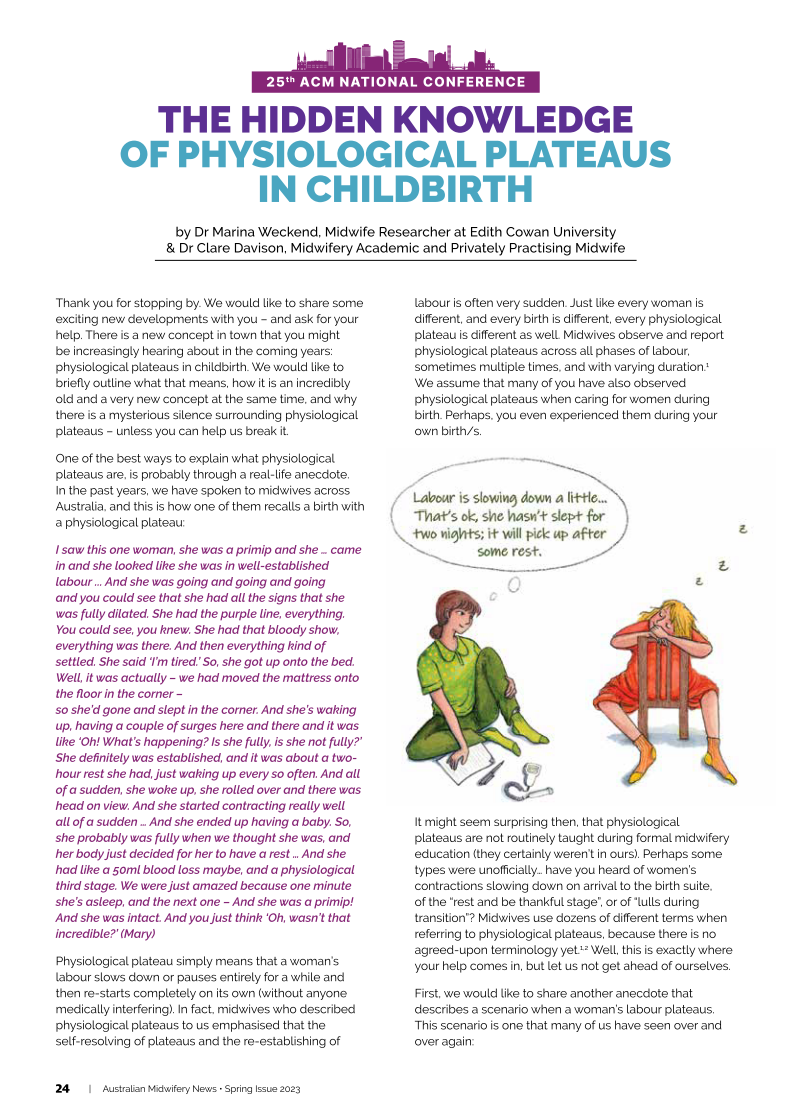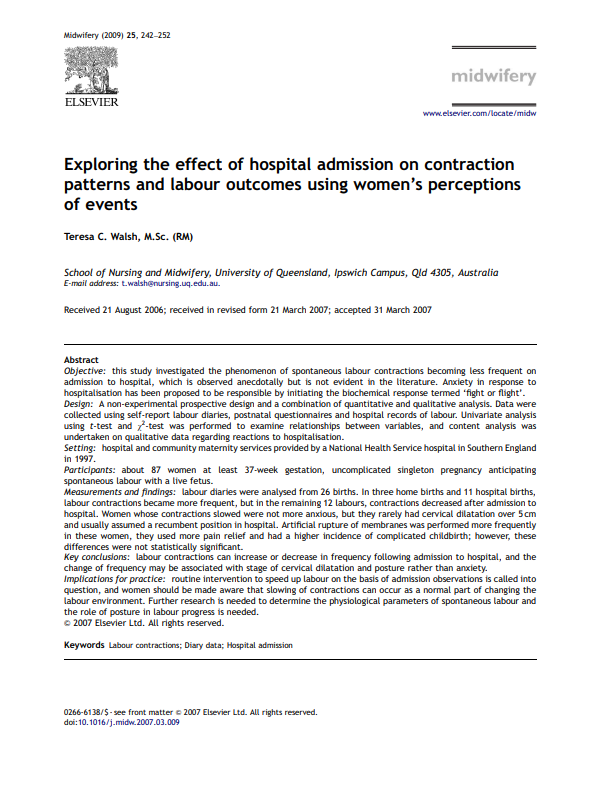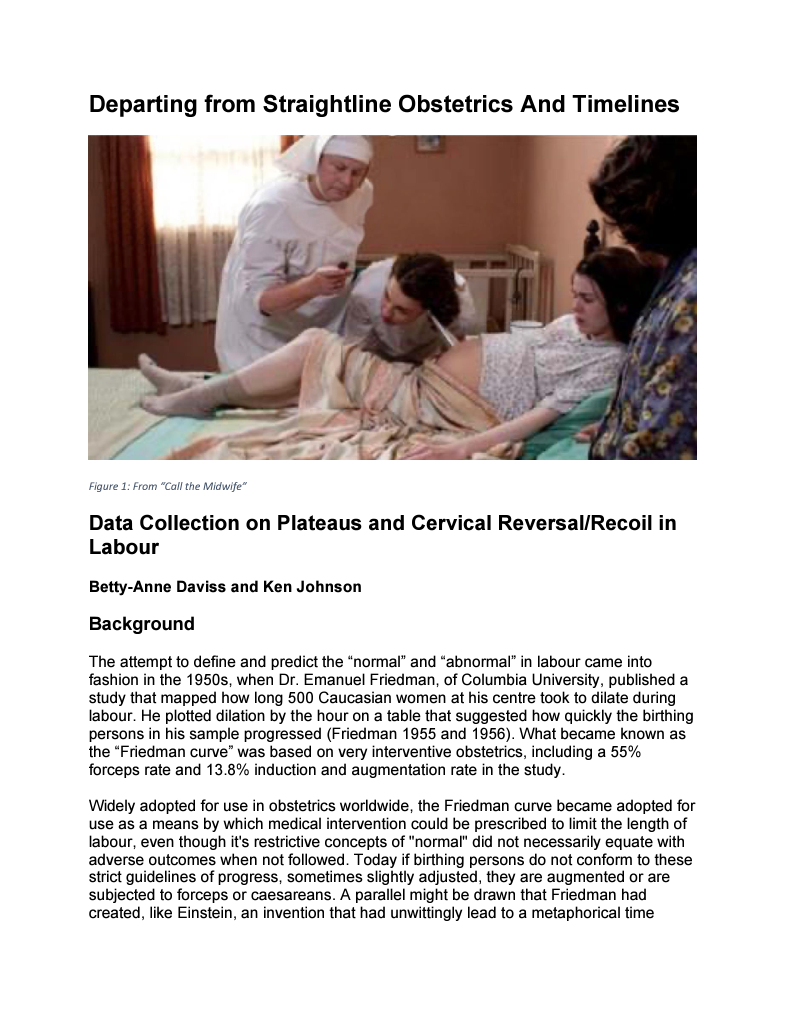Evidence Bank
The Evidence Bank is a library to help you find and access scientific publications and grey literature on (all kinds of) physiological plateaus. Currently, this library is limited to English-language literature. In future, we hope to include a multi-language collection, a thesis collection, and also links to open data. We continuously grow our collection, so let us know what is missing!
Want your publication featured here? Let us know!
Featured Publications and New Releases
Physiological Plateaus Library
Delve into the fascinating literature available on physiological plateaus, healthy birth rhythms, and rebellious midwifery! Get inspired by groundbreaking insights into healthy birth and open your mind to new interpretations of ‘old knowledge’. We thoroughly enjoyed reading each and every one of these publications and hope you will do too.
Finding literature on physiological plateaus can be difficult because this phenomenon is not quite yet ‘accepted knowledge’ in maternity care. This is also why a lot of available articles are ‘grey literature’ – meaning that they have not undergone a scientific peer-reviewing process. Midwifery knowledge has been communicated through storytelling and grey literature for centuries, and this remains an important source of knowledge for practice. We hope that this library can assist you locating both scientific evidence and hidden gems of midwifery knowledge that were ‘lost’ in the course of childbirth medicalisation. Let this library be a springboard into the world of ‘chaotic’ birth rhythms, allow the variety of authors to change your perspective, or simply get confirmed what you have always known…
Not all articles are readily available on the internet, and due to copyright restrictions, we are unable to provide full-text copies. If you struggle accessing something, please reach out to the authors or to our community for possible sharing among colleagues.
In chronological order, starting from the most recent publications… let’s dive in!
Physiological plateaus during normal labor and birth: A novel definition
Marina Weckend, Kylie McCullough, Christine Duffield, Sara Bayes, Clare Davison, 2024
Offering a comprehensive definition of physiological plateaus that is based on original data, this article advocates for an acknowledgement of physiological plateaus in childbirth and calls for more research in this area.
Failure to progress or just normal? A constructivist grounded theory of physiological plateaus during childbirth
Marina Weckend, Kylie McCullough, Christine Duffield, Sara Bayes, Clare Davison, 2024
This article highlights differences in childbirth philosophy that lead health practitioners to interpret slowing labour patterns as either physiological plateaus or labour dystocia.
The hidden knowledge of physiological plateaus in childbirth
Marina Weckend & Clare Davison, 2023
This article discusses why physiological plateaus are often not ‘accepted knowledge’ in contemporary childbirth discourse, and what needs to happen to make this important midwifery knowledge more visible.
The progress of labour: Orderly chaos?
Clare Winter & Margie Duff, 2022
Presenting their respective research areas, these authors critically examine time-based expectations of labour progress and make reference to physiological plateaus along the way.
Physiological plateaus during normal labor and birth: A scoping review of contemporary concepts and definitions
Marina Weckend, Clare Davison, Sara Bayes, 2022
This literature review explores the variety of terms and definitions used to describe physiological plateaus in the past 30 years. Highlighting a lack of shared language, it advocates for using ‘physiological plateaus’ as an umbrella term for the variety of individual pauses that can occur in labour.
Challenging the norm: Exploring the evidence for physiological plateaus during birth
Marina Weckend, 2021
From a personal perspective of learning and unlearning midwifery, this article portrays the journey of accepting, questioning, and challenging beliefs and knowledge about healthy birth rhythms and contemporary intrapartum care.
Departing from straightline obstetrics and timelines: Data collection on plateaus and cervical reversal/recoil in labour
Betty-Anne Daviss & Ken Johnson, 2021
Coining the terms ‘plateau’ and ‘cervical reversal/recoil’ and exposing the trouble with timelines in labour, these authors describe how data on physiological plateaus was collected on a large scale as part of MANA routine data collection, and which insights this offered into fluctuating birth patterns.
Management of the passive phase of the second stage of labour in nulliparous women - Focus group discussions with Swedish midwives
Maria Bjelke, Lena Lendahls & Marie Oscarsson, 2019
This study investigated Swedish midwives’ views of the management of the passive phase of second stage labour. Including several references to periods of slowing labour, pauses, and transition, midwives handled slowing labour patterns individually, employing a holistic view of the woman’s situation.
First stage of labour: The lull
Diane Goslin, 2019
Acknowledging the individuality of each labour and birth, the lull is proposed as an additional ‘stage of labour’ in this article. The lull describes a period of gathering energy and resting.
Labor plateaus and our sexual nature
Elixabeth Davis, 2018
Examining parallels between sexuality, physiology and labour rhythms, this article explains how the phenomenon of plateaus in childbirth should not surprise us at all.
An exploration of midwives’ approaches to slow progress of labour in birth centres, using case study methodology
Laura Iannuzzi, 2016
This critical realist study explores how ‘slow labour progress’ is interpreted by midwives, comparing insights from midwifery units in Italy and England. The study sheds light on how midwives distinguish labour arrest from “physiological rest” and how this ties in with ways of thinking that are unique to midwifery. The full doctoral dissertation is available online.
What is cervical recoil?
Sara Wickham, 2014
A blog post and critical reflection, summarising available information on cervical reversal and challenging contemporary understandings of how the cervix ‘should behave’ during labour.
The 'stages'model of labour: Deconstructing the myth
Clare Winter & Joan Cameron, 2013
These authors argue that acknowledging labour as a physiological process, rather than an event that can be broken into stages, enables midwives’ decision-making to be informed by an understanding of physiology.
Assessing progress through labour using midwifery wisdom
Kathryn Gutteridge, 2013
Challenging the notion of distinct labour stages and discussing the pattern of labour and being with women in labour. Referring to the ‘rest and be thankful’ phase, a lull in second stage, and the concept of transition.
We should go with the rhythm of labour
Denis Walsh, 2013
Critically examining a contemporary fixation with labour progress, the author argues that labour should be viewed as a rhythm that ebbs and flows according to a range of factors, instead of expecting one-size-fits-all labour patterns.
Getting pushy
Alison Bastien, 2011
Using a whole collection of different terms, including the ‘rest and be thankful’ phase, this article refers to a resting period during labour that occurs just before bearing down commences. The author advocates to reclaim this forgotten knowledge and challenges rigid time-based intrapartum care approaches.
Exploring the effect of hospital admission on contraction patterns and labour outcomes using women's perceptions of events
Teresa Walsh, 2009
This innovative original research demonstrates that around half of women on admission to labour ward experience physiological plateaus. The author calls for awareness raising of the impact of birth environments on birth patterns.
Redefining the second stage of labour could help to promote normal birth
Louise Long, 2006
Calling for a redefinition of ‘second stage’, this article discusses transition and the ‘rest and be thankful’ phase as vital elements of labour and challenges the contemporary focus on cervical dilation as a measure of labour progress.
Cervical reversal/regression
Lois Bowman, 2006
A short overview of available information about cervical reversal at the time, referring back to the MANA data collection and reporting some of the results obtained by Daviss and Johnson (see below).
Going backwards: The concept of 'pasmo'
Ina May Gaskin, 2003
A historical journey through obstetric textbooks, revealing how physiological plateaus were considered a commonplace phenomenon before the medicalisation of childbirth took place.
The MANA Curve - describing plateaus in labour using the MANA database
Betty-Anne Daviss, Ken Johnson, & Ina May Gaskin, 2002
Presenting groundbreaking insights into cervical reversal, based on original data collected by MANA in North America. Presented at the 26th ICM Congress in Vienna, this abstract is unfortunately not available online.
Have you ever seen a cervix close down... for instance, as a result of a transport to the hospital?
Betty-Anne Daviss & Ken Johnson, 1998
Groundbreaking insights into cervical reversal, presenting original data collected by MANA in North America. Results were published in the MANA Newsletter, which is unfortunately not available online.
Did you come across an interesting publication on physiological plateaus or healthy birth patterns that is not featured here? Found an article that inspired you to change your perspective? Let us know! We would love to include it in this library and help others find it, too. Currently, our library is limited to English-language articles, but we would love to grow a multi-language collection, so please reach out if you found non-English literature that is suitable for sharing here.
Want to suggest an addition to this library? Please let us know!
Multi-language and Thesis Library
Currently, our library is limited to English-language articles, but we would love to grow a multi-language collection, so please reach out if you found non-English literature that is suitable for sharing here. We are also considering including theses (Bachelors, Masters, Doctoral) in this library. If you would like to share a link to your published thesis, please let us know!
Update December 2024: We started adding theses/dissertations above; once multiple theses are available, they will be moved here.
Want your publication featured here? Keen to suggest an article? Ready to link a thesis?
Please let us know!
Open Research Data
More and more researchers decide to share their data openly to enhance transparency of findings, reduce duplication, and facilitate collaboration through a reuse of data by other researchers. Supporting the spirit of this movement, we would like to collect links to open data of research on the topics of physiological plateaus, healthy birth rhythms, and rebellious midwifery.
Open data may be publicly available online (available for download) or have a mediated access (available for download after approval of individual requests). Often, data can be located by using the search functions in one of the many available Data Repositories. Find out more about Open Data or explore trends in the Open Data Movement.
This website does not act as a data repository, but we collect links to published data available in other repositories across the globe.
Physiological plateaus during childbirth: De-identified research data 2020-2022
This dataset comprises curated (de-identified/anonymised) research data of a grounded theory study, collected between 2020 to 2022 in Australia. The dataset includes interview data of 20 midwives who participated in this study, with an average interview duration of one hour per participant. Data is made available in the form of condensed verbatim transcripts (PDF and Microsoft Word format available, including transcription key), and a reduced demographics table (PDF and Microsoft Excel format available). Audio recordings can be made available in specific circumstances (non-identifiable, WMA and MP3 format available).
